Ask RideApart: What Kind of Motorcycle Should I Buy?
Ask RideApart: What Kind of Motorcycle Should I Buy?
Buying a motorcycle can be an overwhelming process. There are so many different categories of bikes and so many bikes within each category it can be hard to even know where to start. Their multi-figure price tags mean the decision is not to be taken lightly, either. So let's break down how to pick which bike is right for you and talk about what each bike has to offer.
Finding the right tool
For the sake of this discussion it might help to view motorcycles as tools. Different jobs require different tools. Hands down, the best place to start when looking to get a bike is by asking yourself what type of riding you plan on doing. Do you plan on doing some or a lot of off-road and dirt riding? Do you plan on doing track days? Will this bike be used for daily commuting? Are you going to be doing long-distance riding? Keep in mind that many bikes are going to be capable of performing multiple riding applications, although maximizing a bike's potential may sometimes require modifications. Think about your intended application and pick your “tool” based on the task.
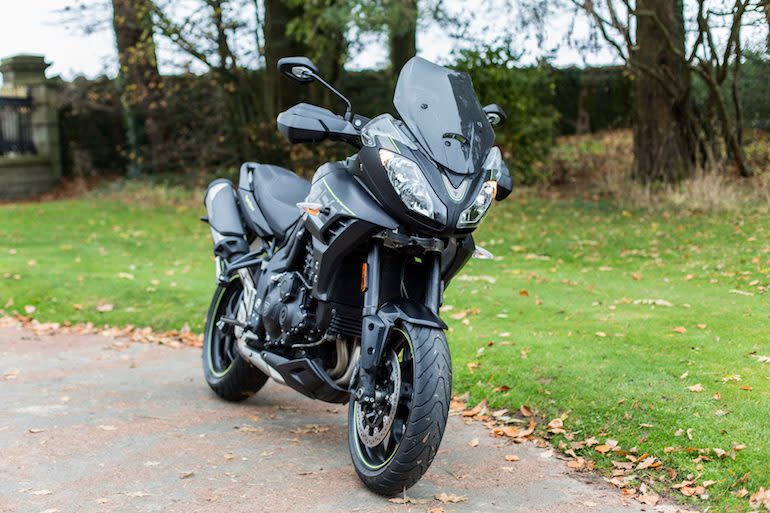
Get a Bike You Like
While choosing your motorcycle based on logic and practicality is important, it’s OK to acknowledge that we’re humans and we’re affected by emotions. You can still get a bike even if it’s not the most practical choice, as long as you're content with its limitations. While a standard or naked bike might be a better choice for daily commuting, I personally ride a Suzuki GSX-R600 (K7) as a commuter and thoroughly enjoy it. As long as you fully know and understand the sacrifices that come with each bike, it’s OK to buy a bike you love. Being attracted to a genre of motorcycle because of its styling and appearance is more normal than most riders will admit.
Skilled or Killed
While it's probably not that dramatic, I can’t begin to explain how important it is to pick a bike that’s within your ability. Riding a bike beyond your skill level is not only unnecessarily dangerous, but also greatly impedes your ability to learn and progress as a rider. For a new rider, smaller bikes are easier to ride and control, less sensitive, and offer more room for error; you can still thoroughly advance and progress on a small displacement machine.
READ MORE: 11 Reasons Why You Don't Want a Liter Bike | RideApart
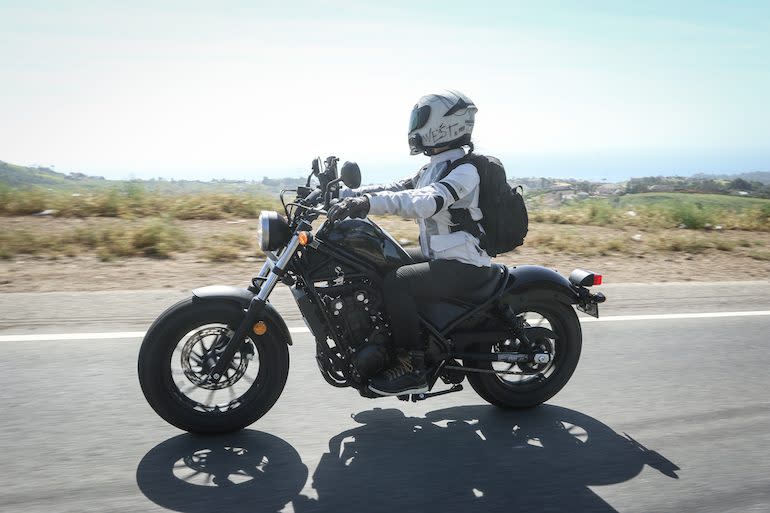
Far too many new riders have been quickly turned off from riding because they made the mistake of going too big too soon. The truly great news is that now more than ever there are entry-level options for pretty much every category of motorcycle. On top of that, some of the modern entry-level offerings are damn fine looking bikes, too. Sharpen your skills on an appropriate bike and move up when you’re ready.
Now let's take a look at the main categories, and in some cases subcategories, of motorcycles and delve into where each shines and where each falls short.
Standard Motorcycles:
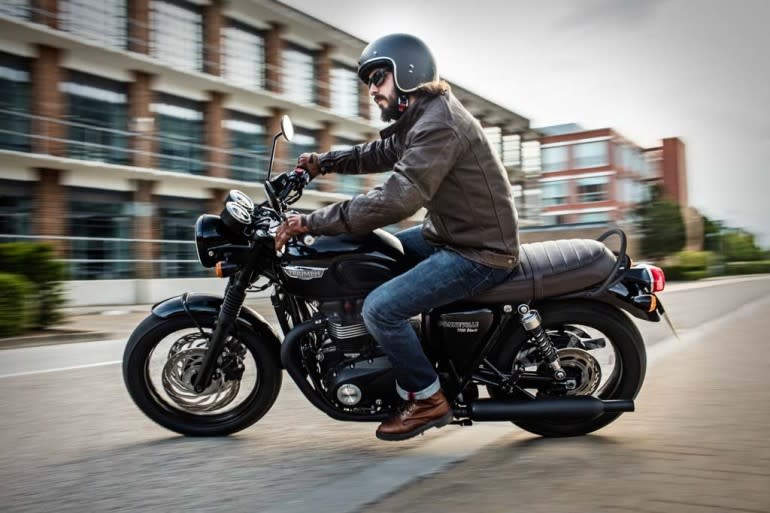
The standard motorcycle is exactly what it sounds like, it’s your regular, typically no-frills, basic motorcycle. Standards often have retro styling and are fairly minimalistic. These bikes typically don't have high-tech, cutting-edge features but are nonetheless solid machines for most street riding applications. They have a mostly upright riding position and make for good commuters as well as good starter bikes. Their performance is typically pretty tame in contrast to other modern offerings, but that doesn’t mean they can’t keep up on the freeway. A large part of the standard’s appeal is its classic and timeless flavor. These are bikes are often easier to work on or customize. So, it's not uncommon to see them transformed into cafe racers, scramblers, and the like.
Naked Bikes:
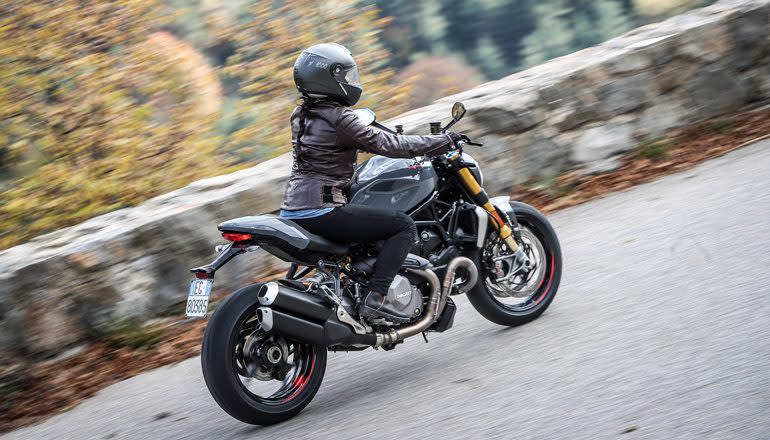
While standards are technically naked bikes, we typically reserve the term "naked" and "super naked" for bikes with quite a bit more power. Often they are “streetfighter”-type machines: sport bikes that have been modified to be more street oriented. This typically means removing all or most of the fairings (bodywork/panels/plastics), and replacing the clip-ons (handlebars) with a single 'bar that's often several inches higher – giving the rider a more comfortable and upright seating position. The engines are typically tuned differently than sport bikes for a more street-appropriate powerband.
READ MORE: A Short History of the Naked Bike | RideApart
Nakeds are sexy and aggressive machines that are a fantastic choice for someone who wants a sport bike but also wants something more practical for commuting. Nakeds are great in traffic and right at home at the local track. The upright seating position allows for a great field of vision, making them perfect for zipping through traffic. Their aggressive stance and lines, along with their exposed engines, make nakeds one of the more badass-looking categories of motorcycle. These are seriously fun bikes that should not be overlooked by anyone looking for something sporty yet sensible.
Sportbike:
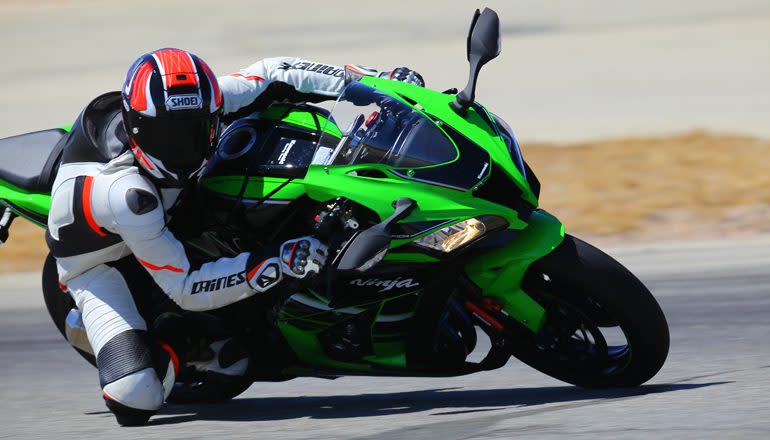
Sport (or sports) bikes are purpose-built machines made to do one thing: go around a track as fast as possible. While most will have been adjusted to be better suited for street riding, with changes such as looser suspension, these are still the motorcycles with the fastest acceleration and top speeds, best braking and best handling. It's typically the case that new technology and advancements in motorcycling first appear on these bikes. All of these awesome aspects of sportbikes do however come at a cost. Luxuries such as comfort, fuel economy, price, and practicality are given up. Not to mention the higher cost of insurance – especially for new and/or younger riders.
Cops also tend to pay extra attention to sportbikes (in my experience). These don’t make the best commuter vehicles and are often an easy target for motorcycle thieves (being light and nimble means these bikes are easier to pick up and throw in a van than some other genres). Another downside to these bikes is that they really can’t be ridden to even half of their full potential on public roads. Not legally, at least. After a while, owning a sportbike might feel like being married to a really attractive person you can never sleep with. Though, there is always the track – where these marvels of engineering can be fully exploited.
READ MORE: Too Much Too Soon? When to Upgrade to a Bigger Sportbike | RideApart
Even with all the negatives of sportbike ownership, for some riders there is nothing else comparable. The raw thrill of the acceleration and cornering ability is wildly addictive. I love my Gixxer and have been happy to make the sacrifices necessary when commuting. That being said, my lower back and I often dread having to make long hauls.
Cruiser:
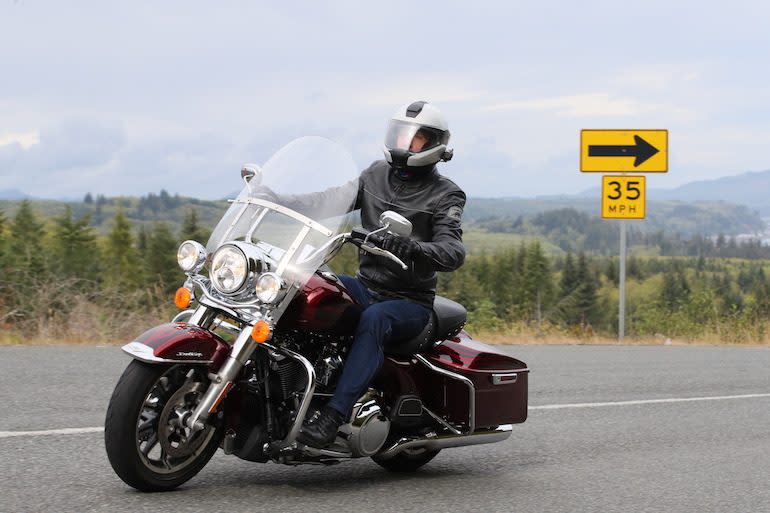
Cruiser motorcycles are traditionally bikes with large engines and classic styling based on American motorcycles from the 1930s-1950s. They typically have seating positions that are are upright or leaned back. Usually heavier than other motorcycles, cruisers can sometimes be difficult to muscle around in tight spaces. While cruisers don’t boast very impressive numbers on paper – in terms of speed, acceleration, lean angle or handling – these bikes undeniably have their place in the motorcycle world, and a big one at that. There's a reason almost every modern manufacturer offers a cruiser in its line-up.
Though you certainly wouldn't guess it from looking at the parking lot of a military base, it's generally felt that cruisers don’t make the best commuting machines. But, in bagger and touring guises especially, cruisers are excellent touring machines and perfect for covering some serious distance. There are also many different types of cruiser, each with its own perks and setbacks: some have more aggressive performance and handling, some are better for long-distance riding, and some are anything but practical but look seriously badass. You may have to do some additional homework to figure out which type is right for you.
READ MORE: How to Ride an Vintage Harley-Davidson | RideApart
Cruisers, maybe more so than any other genre, are symbols of independence and freedom. Think about it: if an ad campaign wants to portray someone who "goes their own way" it puts them on a cruiser, even though something like a beat-up Suzuki DR-Z400 (see below to learn about dual-sports) would probably make more sense. These are machines that are steeped in American history and tradition.
Dual Sport:
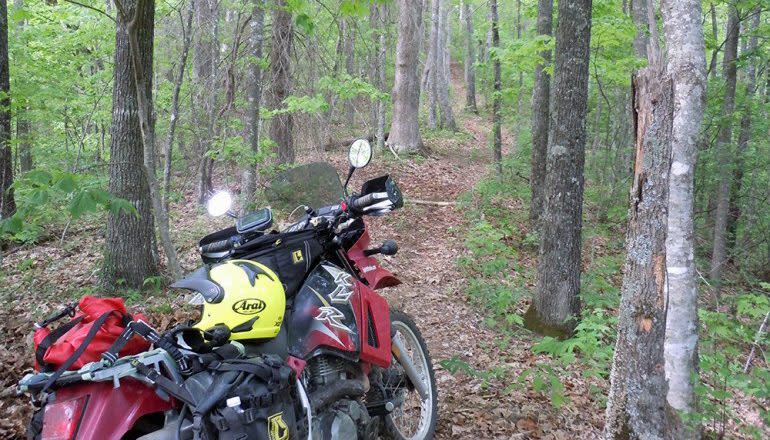
Dual Sport motorcycles are built to be ridden both on and off road, but engineered more toward off-road applications. Their style is reminiscent of dirt bikes and that's for good reason: in many cases these are essentially dirt bikes that have been fitted with the necessary pieces to make them street legal (e.g., headlights, turn signals, license plate, speedometer, etc). This is one genre where it’s particularly common to see single-cylinder powerplants in today’s multi-cylinder motorcycle world. Seriously rugged, a true dual sport is designed to take one hell of a beating. They can handle pretty much any weather that you can and, with a pair of knobby tires, can take on the world.
READ MORE: Why I Bought a Kawasaki KLR650 | RideApart
This category of motorcycle can handle commuting and urban riding, too, though dual sports aren’t the most comfortable over long distances without modification. Another area where they fall short is speed. Smaller dual sports can have a hard time keeping up with freeway traffic.
By swapping out the wheels and tires, adjusting or replacing the handlebars, and replacing or retuning the suspension, a dual sport can become a supermoto, which is a bike purely focused on satisfying the wheelie-popping, braap-revving hooligan in your soul.
ADV Bikes:
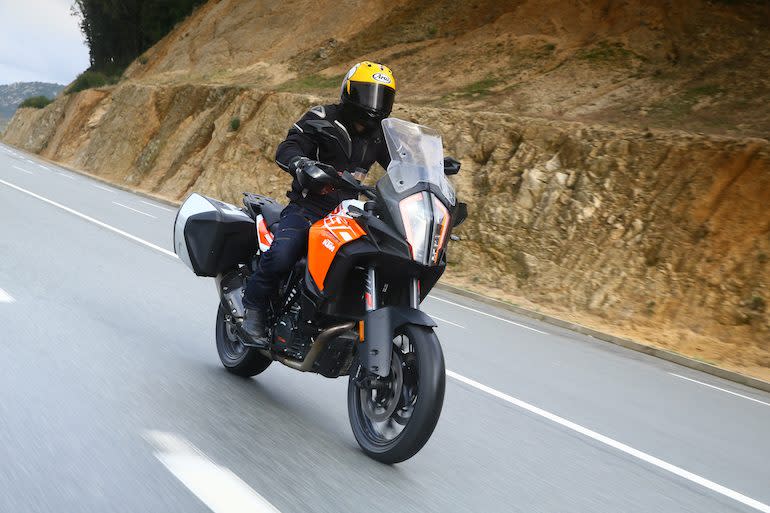
I know, ADVs (aka adventure bikes) are technically dual sports, but they differ enough for me that I feel justified in giving them their own place on this list, especially as their popularity has grown in recent years and models have become more and more road-focused. ADVs are (typically) tall and heavy bikes that are ostensibly built for both on- and off-road applications. They make great long-distance bikes, especially if some of that distance isn’t on paved surfaces. Because of their immense weight, they can at times be a little tricky to operate in harsh terrain, but where they fall short off road they seem to make up when back on the tarmac. Typically large displacement makes these bikes great for freeway travel, as do their comfortable seating positions.
READ MORE: Why There's No Shame in Owning an ADV and Never Taking it Off Road | RideApart
Increasingly, ADV machines are joining sportbikes in being the genre where the latest technology appears first. Especially when that technology is related to making the rider more comfortable, either physically or mentally. It's not just about heated grips anymore. A popular choice for commuting, ADV machines offer the ergonomic advantages of a standard, the power of a naked, the wind protection and luggage capacity of a tourer, and (often) the durability of a dual sport. I imagine some ADV owners fall in the same category of pickup truck owners who don’t need that type of vehicle so much as they simply dig how they look and stuff.
Scooter
Now hear me out, I'm aware scooters don't always carry the same badass quality that other two wheelers possess. But depending on your intended riding application – especially for new riders with no previous experience – scooters can be a great choice. Scooters are easy to ride and maneuver almost right away. The existence of scooter rental businesses all over tourist destinations should be an indication of this. If the fear of riding is what's holding you back from (in my experience) one of the greatest joys in life, then a scooter may be your solution.
I personally cut my teeth on a 150cc scooter. Your dream bike will always be there a few years down the road, but too many have gotten into riding and found it unenjoyable because their time was spent wrestling a machine that was too big or too heavy or too powerful or too something for for their skill level. Meanwhile, scooters get great gas mileage, are cheap to insure and maintain (not that they require much maintenance), and can be purchased used in solid condition for under a grand.
What Did We Miss?
Did we leave something out? What's your favorite genre of motorcycle and why?

 Yahoo Autos
Yahoo Autos 
